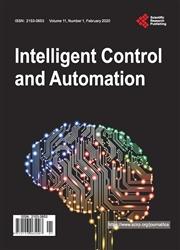Sigma-Point Filters in Robotic Applications
引用次数: 6
Abstract
Sigma-Point Kalman Filters (SPKFs) are popular estimation techniques for high nonlinear system applications. The benefits of using SPKFs include (but not limited to) the following: the easiness of linearizing the nonlinear matrices statistically without the need to use the Jacobian matrices, the ability to handle more uncertainties than the Extended Kalman Filter (EKF), the ability to handle different types of noise, having less computational time than the Particle Filter (PF) and most of the adaptive techniques which makes it suitable for online applications, and having acceptable performance compared to other nonlinear estimation techniques. Therefore, SPKFs are a strong candidate for nonlinear industrial applications, i.e. robotic arm. Controlling a robotic arm is hard and challenging due to the system nature, which includes sinusoidal functions, and the dependency on the sensors’ number, quality, accuracy and functionality. SPKFs provide with a mechanism that reduces the latter issue in terms of numbers of required sensors and their sensitivity. Moreover, they could handle the nonlinearity for a certain degree. This could be used to improve the controller quality while reducing the cost. In this paper, some SPKF algorithms are applied to 4-DOF robotic arm that consists of one prismatic joint and three revolute joints (PRRR). Those include the Unscented Kalman Filter (UKF), the Cubature Kalman Filter (CKF), and the Central Differences Kalman Filter (CDKF). This study gives a study of those filters and their responses, stability, robustness, computational time, complexity and convergences in order to obtain the suitable filter for an experimental setup.机器人应用中的sigma点滤波器
西格玛点卡尔曼滤波器(SPKFs)是高度非线性系统中常用的估计技术。使用SPKFs的好处包括(但不限于)以下几点:与扩展卡尔曼滤波(EKF)相比,它能够处理更多的不确定性;能够处理不同类型的噪声;比粒子滤波(PF)和大多数自适应技术具有更少的计算时间,使其适合在线应用;与其他非线性估计技术相比,它具有可接受的性能。因此,SPKFs是非线性工业应用(即机械臂)的有力候选者。由于系统的性质,包括正弦函数,以及对传感器数量、质量、精度和功能的依赖,控制机械臂是困难和具有挑战性的。spkf提供了一种机制,可以在所需传感器的数量及其灵敏度方面减少后一个问题。此外,它们还能在一定程度上处理非线性。这可以用来提高控制器的质量,同时降低成本。本文将SPKF算法应用于由一个移动关节和三个旋转关节组成的四自由度机械臂。其中包括Unscented卡尔曼滤波器(UKF), Cubature卡尔曼滤波器(CKF)和中心差分卡尔曼滤波器(CDKF)。本文研究了这些滤波器及其响应、稳定性、鲁棒性、计算时间、复杂性和收敛性,以获得适合实验设置的滤波器。
本文章由计算机程序翻译,如有差异,请以英文原文为准。
求助全文
约1分钟内获得全文
求助全文

 求助内容:
求助内容: 应助结果提醒方式:
应助结果提醒方式:


